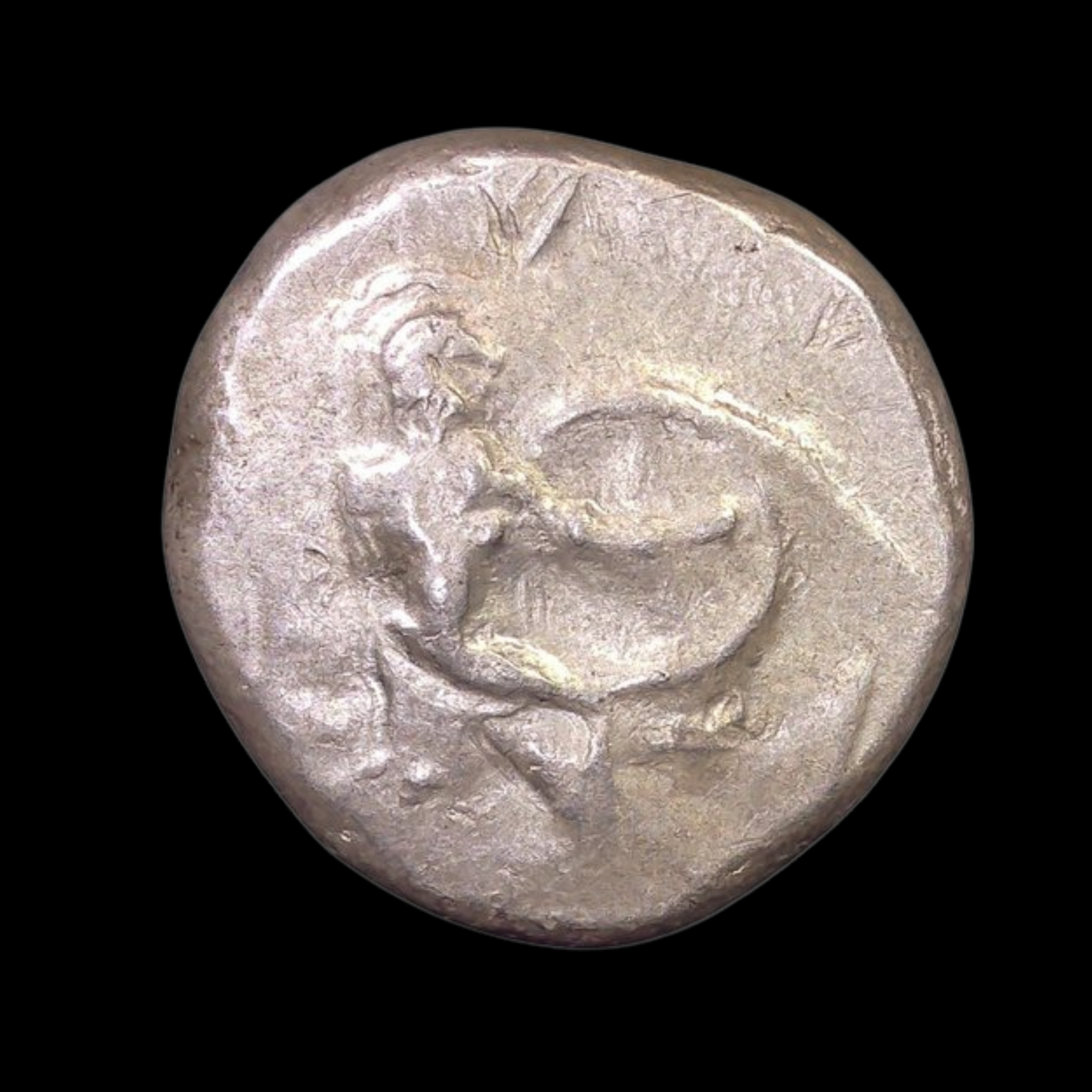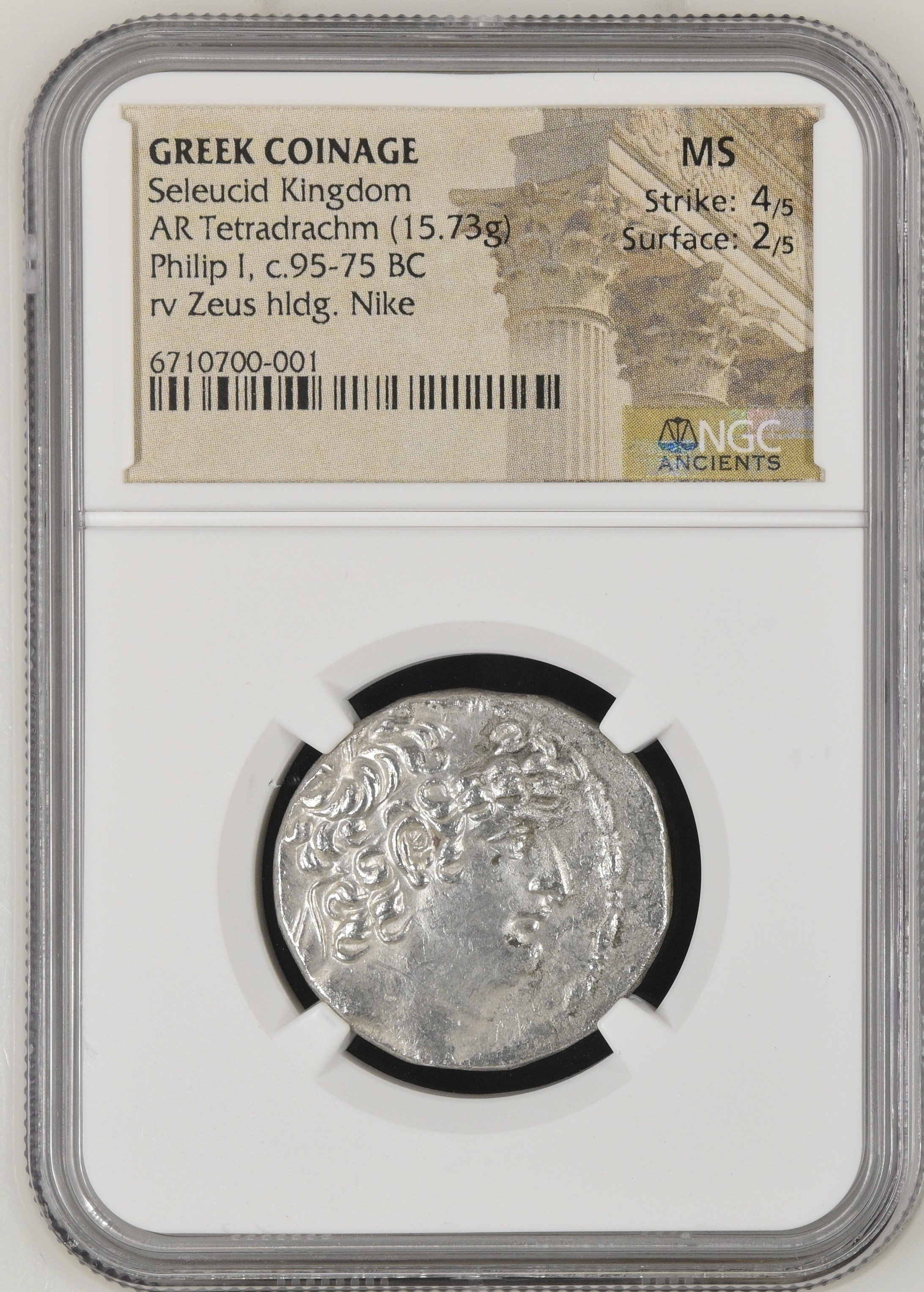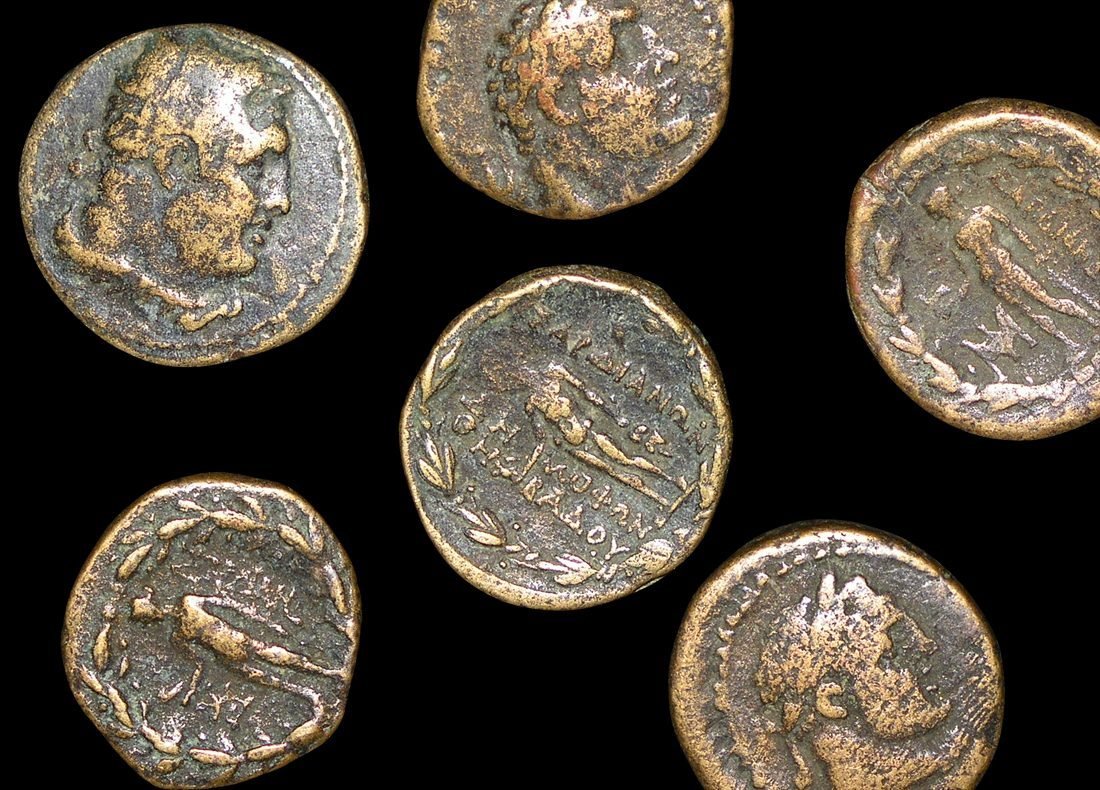 Image 1 of 2
Image 1 of 2

 Image 2 of 2
Image 2 of 2



Aspendus Silver Stater from Pamphylia (about 2460-2495 years ago)
This substantial silver coin comes from the ancient city of Aspendus in Pamphylia (southern coast of modern Turkey). The stater was a high-value trade coin that facilitated commerce throughout the eastern Mediterranean during a period when Persian influence was giving way to increasing Greek cultural and economic dominance.
Coin Description:
Front side: Naked warrior (hoplite) advancing right, holding sword and large round shield
Back side: Triskeles (three human legs joined at the center) with the letters "EΣ" above, all contained within an incuse square
Technical Details:
Silver composition, weighing 10.81 grams
Stater denomination (major silver trade coin)
References: Cf. SNG Aulock-4477 and BM-3
No certification mentioned
Date: Circa 465-430 BCE
Condition: Not specified
Historical Significance:
Aspendus was a prosperous city in Pamphylia (southern Turkish coast) that was officially under Persian control during this period but maintained significant autonomy. The warrior image reflects the city's military traditions, while the distinctive triskeles symbol may represent the three major promontories of Asia Minor or have religious significance. These staters were renowned for their consistent weight and fineness, making them important in Mediterranean trade networks during the period when Athens was rising to its height of power.
This substantial silver coin comes from the ancient city of Aspendus in Pamphylia (southern coast of modern Turkey). The stater was a high-value trade coin that facilitated commerce throughout the eastern Mediterranean during a period when Persian influence was giving way to increasing Greek cultural and economic dominance.
Coin Description:
Front side: Naked warrior (hoplite) advancing right, holding sword and large round shield
Back side: Triskeles (three human legs joined at the center) with the letters "EΣ" above, all contained within an incuse square
Technical Details:
Silver composition, weighing 10.81 grams
Stater denomination (major silver trade coin)
References: Cf. SNG Aulock-4477 and BM-3
No certification mentioned
Date: Circa 465-430 BCE
Condition: Not specified
Historical Significance:
Aspendus was a prosperous city in Pamphylia (southern Turkish coast) that was officially under Persian control during this period but maintained significant autonomy. The warrior image reflects the city's military traditions, while the distinctive triskeles symbol may represent the three major promontories of Asia Minor or have religious significance. These staters were renowned for their consistent weight and fineness, making them important in Mediterranean trade networks during the period when Athens was rising to its height of power.
This substantial silver coin comes from the ancient city of Aspendus in Pamphylia (southern coast of modern Turkey). The stater was a high-value trade coin that facilitated commerce throughout the eastern Mediterranean during a period when Persian influence was giving way to increasing Greek cultural and economic dominance.
Coin Description:
Front side: Naked warrior (hoplite) advancing right, holding sword and large round shield
Back side: Triskeles (three human legs joined at the center) with the letters "EΣ" above, all contained within an incuse square
Technical Details:
Silver composition, weighing 10.81 grams
Stater denomination (major silver trade coin)
References: Cf. SNG Aulock-4477 and BM-3
No certification mentioned
Date: Circa 465-430 BCE
Condition: Not specified
Historical Significance:
Aspendus was a prosperous city in Pamphylia (southern Turkish coast) that was officially under Persian control during this period but maintained significant autonomy. The warrior image reflects the city's military traditions, while the distinctive triskeles symbol may represent the three major promontories of Asia Minor or have religious significance. These staters were renowned for their consistent weight and fineness, making them important in Mediterranean trade networks during the period when Athens was rising to its height of power.
Pamphylia (/pæmˈfɪliə/; Ancient Greek: Παμφυλία, Pamphylía) was a region in the south of Asia Minor, between Lycia and Cilicia, extending from the Mediterranean to Mount Taurus (all in modern-day Antalya province, Turkey). It was bounded on the north by Pisidia and was therefore a country of small extent, having a coast-line of only about 120 km (75 miles) with a breadth of about 50 km (30 miles). Under the Roman administration the term Pamphylia was extended so as to include Pisidia and the whole tract up to the frontiers of Phrygia and Lycaonia, and in this wider sense it is employed by Ptolemy.[1]
The name Pamphylia comes from the Greek Παμφυλία,[2] itself from Ancient Greek: πάμφυλος (pamphylos), literally "of mingled tribes or races",[3] a compound of πᾶν (pan), neuter of πᾶς (pas) "all"[4] + φυλή (phylē), "race, tribe".[5] Herodotus derived its etymology from a Dorian tribe, the Pamphyloi (Πάμφυλοι), who were said to have colonized the region.[6] The tribe, in turn, was said to be named after Pamphylos (Greek: Πάμφυλος), son of Aigimios.[7][8]
According to Encyclopædia Britannica, the Pamphylians were “a mixture of aboriginal inhabitants, immigrant Cilicians (Greek: Κίλικες) and Greeks”.[9] However, Herodotus and Strabo record that the Pamphylians were descended from Greeks who came with Calchas and Amphilochos after the Trojan War.[10] Additionally, Pausanias states that they were a Greek race.[11] Theopompus, as well, informs us that Pamphylia was inhabited by Greeks.[12] Some modern scholars suggest that they migrated to Pamphylia from Arcadia and generally the Peloponnese in the 12th century BC.[13] The significance of the Greek contribution to the origin of the Pamphylians can be attested alike by tradition and archaeology,[14] and Pamphylia can be considered a Greek country from the early Iron Age until the early Middle Ages.[15]
You Might Also Like









